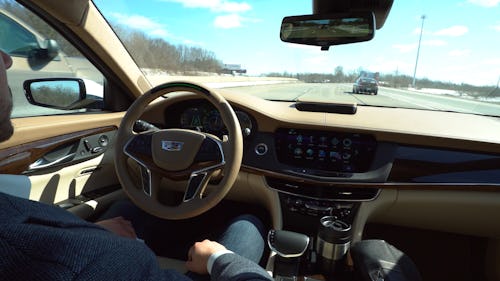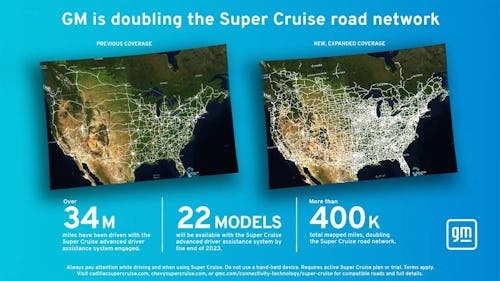
While Tesla faces serious heat from The National Highway Traffic Safety Association over its potentially fatal Autopilot software, GM is planning to double the coverage of its hands-free driving assistance tech. GM says it’s looking to increase the amount of highways mapped on its Super Cruise network by 400,000 miles, adding some of the most iconic roads in the U.S. and Canada.

GM first introduced Super Cruise with the Cadillac CT6 in 2018, but has since made the driver assistance tech available to other models, like the Chevy Bolt EUV. By the end of 2023, GM is hoping to having Super Cruise available in 22 models across the brand.
The latest update to the Super Cruise network means drivers will be able to use the feature in more locations across the U.S. and Canada, including on the historic U.S. Route 66, Pacific Coast Highway, U.S. Route 1, and the Trans-Canada Highway.
Meticulous mapping —
GM calls Super Cruise the “industry’s first true” hands-free driver assistance technology. It works by using precision LiDAR map data, real-time cameras, radars and GPS to automatically operate the car. The feature is designed to keep your car in the correct lane, maintain the right speed and distance from the car in front of you, and some select models can even change lanes.
GM’s model differs from Tesla’s Autopilot since it’s mapping out its Super Cruise network through precision surveying and LiDAR scanning. The Super Cruise network clearly takes more time to establish than Tesla’s system that works on most roads since it’s based off on-board cameras and neural net processing.
Unlike Tesla’s Full Self-Driving beta, which includes features that can be used on city streets, Super Cruise is geared exclusively toward highways as a kind of long distance driving assist.
Subscription-based —
GM’s Super Cruise is making a play to become the gold standard for driving assist. While it takes a longer time to establish the Super Cruise network compared to Tesla’s approach, GM is well on its way to making it available on major highways and roads. Super Cruise, like Tesla’s Autopilot, is subscription-based, and costs $25 a month, though it does come free for three years with most GM vehicles.
It’s not just Tesla and GM offering driver assistance tech, as Ford introduced its own proprietary system called BlueCruise. But as the race for the best hands-free driving tech continues, we’re hoping car companies prioritize safety above all else.







